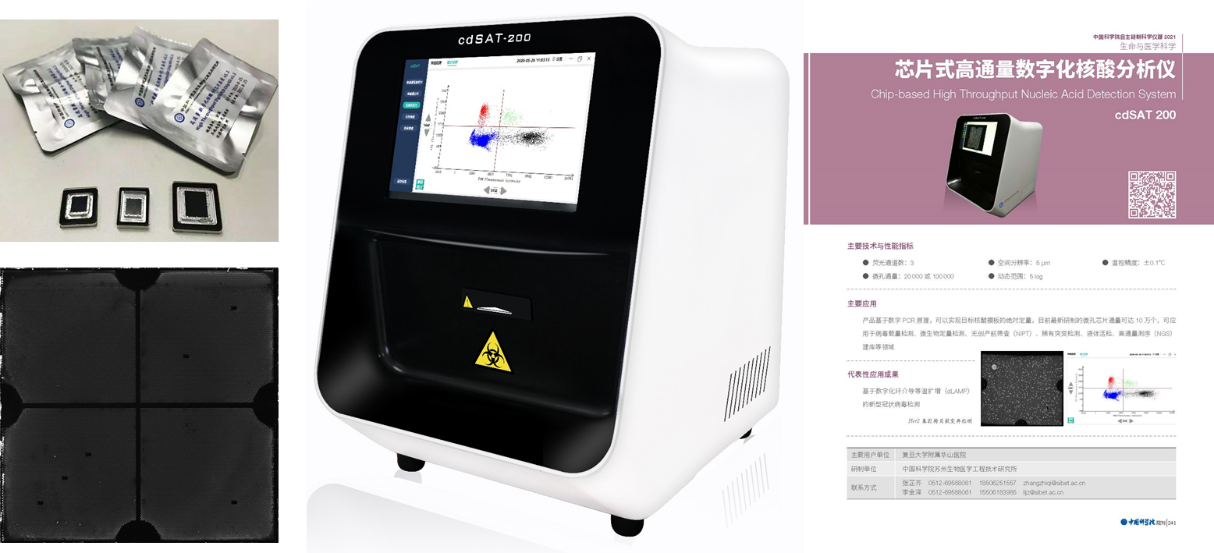Myeloproliferative neoplasms (MPNs) are a type of chronic hematological tumor that is accompanied by bone marrow failure or leukemia. A joint team from China recently provided a sensitive, multiplexing, quantitative detection method for the early diagnosis and targeted therapy of MPNs.
The team, led by ZHOU Lianqun's group from Suzhou Institute of Biomedical Engineering and Technology of the Chinese Academy of Sciences and GUAN Ming’s group of Laboratory Medicine department from Huashan Hospital, established a nanoparticle-assisted digital loop-mediated isothermal amplification (nano-dLAMP) platform for the analysis of MPNs in this study.
Digital polymerase chain reaction (digital PCR, dPCR), a high sensitivity, absolute quantitative and high tolerance nucleic acid detection technology, plays an important role in a variety of application fields, such as rare mutations detection, copy number variation, liquid biopsy, single cell analysis, genetically modified detection, viral load testing, and microbiological quantitative analysis.
Researchers fabricated microarray chips with four physical partitions for the simultaneous detection of calreticulin type 1 (CALR-1), calreticulin type 2 (CALR-2), and janus kinase 2 V617F (JAK2 V617F) mutations and an internal reference gene.
They then used PCR additives and nanoparticles to make the traditional loop mediated isothermal amplification (LAMP) suitable for nanoliter-scale amplification.
Results suggested that nanoparticles could improve the amplification performance of nanoliter LAMP.
Quantitative detection of the main MPN molecular markers could be performed simultaneously in one four-partition microarray chip within 1 h. The detection sensitivity values for CALR-1, CALR-2, and JAK2 V617F were 0.5%, 0.1%, and 0.5% mutation burden, respectively. The agreement between the developed platform and the commercial Quantstudio 3D was high at 99% (280/281).
This accurate, rapid, multiplex, and inexpensive nano-dLAMP platform could be a promising tool for clinical diagnosis in the future, according to the researchers.
Results of the study was published in Sensors & Actuators B: Chemical, entitled “Establishment of Scalable Nanoliter Digital LAMP Technology for the Quantitative Detection of Multiple Myeloproliferative neoplasm molecular markers”.
ZHOU's group has been focusing on biosensor field for more than 10 years, and has accumulated a firm foundation in biosensor method development, biochip design and processing, and bioscience instrument development.
In the digital PCR research and development, chip-based dPCR (cdPCR) method with high isolation stability, good temperature uniformity and fast detection speed was developed. A series of progress were obtained on the detection method, chip, reagent and instrument of cdPCR.

Figure 1. Workflow diagram of the nano-dLAMP detection system. (Image by SIBET)

Figure 2. Chips and instrument of chip-based digital PCR. (Image by SIBET)
Contact
XIAO Xintong
Suzhou Institute of Biomedical Engineering and Technology, Chinese Academy of Sciences (http://www.sibet.cas.cn/)
Phone: 86-512-69588013
E-mail: xiaoxt@sibet.ac.cn